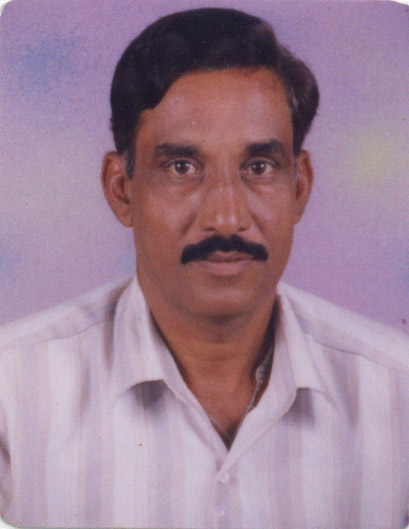Genesis
Traditionally paddy is threshed by beating followed by winnowing and cleaning by the fan. Paddy stalks are the main source of fodder for the animals in the region and in addition they are the raw materials for paper industries. There was shortage of labour and hence the labour charges were quite high too.These constraints were the basic ones when he planned to make such a machine. To overcome this labour intensive paddy threshing and to conserve the paddy strains, Dilip Sinh developed paddy thresher where the paddy grains and stalks are obtained separately at the end of the threshing process.He conceived the idea to develop this machine sometime in 2003, after which he made elaborate diagrams on paper. The same were presented before GIAN- NIF during his visit in early 2005, after which some financial support was provided to him to develop the machine. The development of the present machine took seven to eight months.
Innovation
The proposed innovation is a hybrid product of two well -known concepts i.e. threshing by beating and retaining the whole stalk and is pollution free and environment friendly technology.The concept of rubbing the crop in between threshing drum and concave and obtaining the whole stalk of the paddy while threshing is in use1 . US patent nos. 4185642, 3963032, 4174718, 4821744 and 4489735 describe the threshing mechanism for paddy, wheat and similar crops. In all these mechanisms, threshing of the crop is achieved by rubbing of the ear-heads in between the threshing drum and the concave. No whole stalk of the paddy is retained in these threshers and is blown out in the form of chopped material called bhusa (husk).However, the proposed innovation is different from the threshing concept, here threshing is achieved by beating action, which is mechanized by using tractor power through PTO.It consists of self-made frame, feeding mechanism, threshing mechanism, and cleaning mechanism. A pair of pneumatic wheels is provided for transportation purpose. In feeding mechanism tray type hoppers are provided to keep the paddy bunches. Paddy bunches are moved forward through conveyer belts on either sides of the thresher.The upper and lower conveyer belts are made of thick cotton threads and rotate in opposite direction. The conveyer belts pass the paddy bunch for 1.5 m length during which only ear head portion gets hreshed. In this thresher, the paddy is threshed by beating. Four beaters are provided on the central shaft.To remove the light foreign material and straw from the grain, two fans (self-made) are provided. The heavy foreign material and stalks of the paddy, which fall with the grains, are thrown out with the help of vibrating elevator, which runs beneath the fans. These fans and the elevator get the drive from PTO of the tractor.To collect the clean grain, two grain outlets on either side are provided. Three labours are required to operate this thresher apart from the tractor power (it can run even by 2 HP motor).Since this thresher does not produce husk, it is environment friendly and region specific technology. The cost of the thresher is estimated to be around Rs. 55,000.Using this machine, whole paddy stalk is obtained instead of chopped pieces, which are the main source of fodder for animals in the area. In whole stalk the nutritional value is conserved, it is easy to handle and very good raw material for paper industry also. The stalks of the paddy yield the income of about Rs. 4000/- per ha.His son is now making efforts made to double the capacity per unit time as compared to the conventional threshers.
Background
Late Dilip Sinh Rana thoughtfully developed the paddy thresher, where the stalk of the paddy does not get broken during the threshing process.Dilip Sinh?s family originally belongs to Unchedia village of Bharuch but he had to shift to his father in law?s place after his marriage in 1974, as his father in law did not have anybody to help him in his work. He completed his education till class tenth and then started his diploma in mechanical engineering but unfortunately had to drop out in the first year itself. Since then he had been involved in farming until his untimely demise in March 2006.He is survived by his wife, three daughters and a son. His son, who is 20 years old, has taken care of the farm after the death of his father. The family owns around twelve acres of agricultural land and produce paddy, sugarcane and other vegetables.As a child also he possessed leadership qualities and his friends and others used to come to him to get help and seek advice. While in his teens, he made a projector all by himself on which he used to show movies to the children in his area.He was always ready to help others. Instead of waiting for things to happen he believed in working and making things happen. Without having any technical knowledge he was able to mend electricity connections, machines, automobiles, etc. He never said no to any one who approached him for help and tried to help in whatever way he possibly could. Since he was a farmer, he always thought of ways to make life easier for them, without thinking of getting any financial support or recognition in return.
Awarded by NIF







